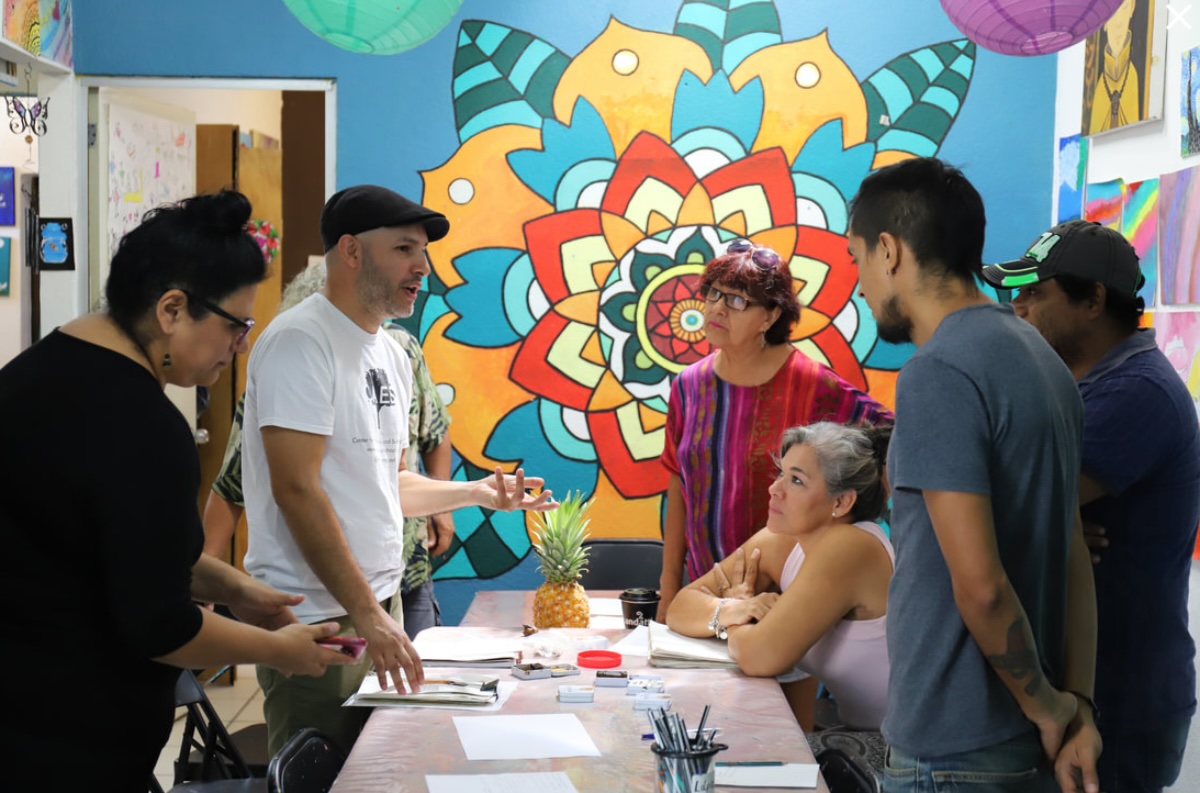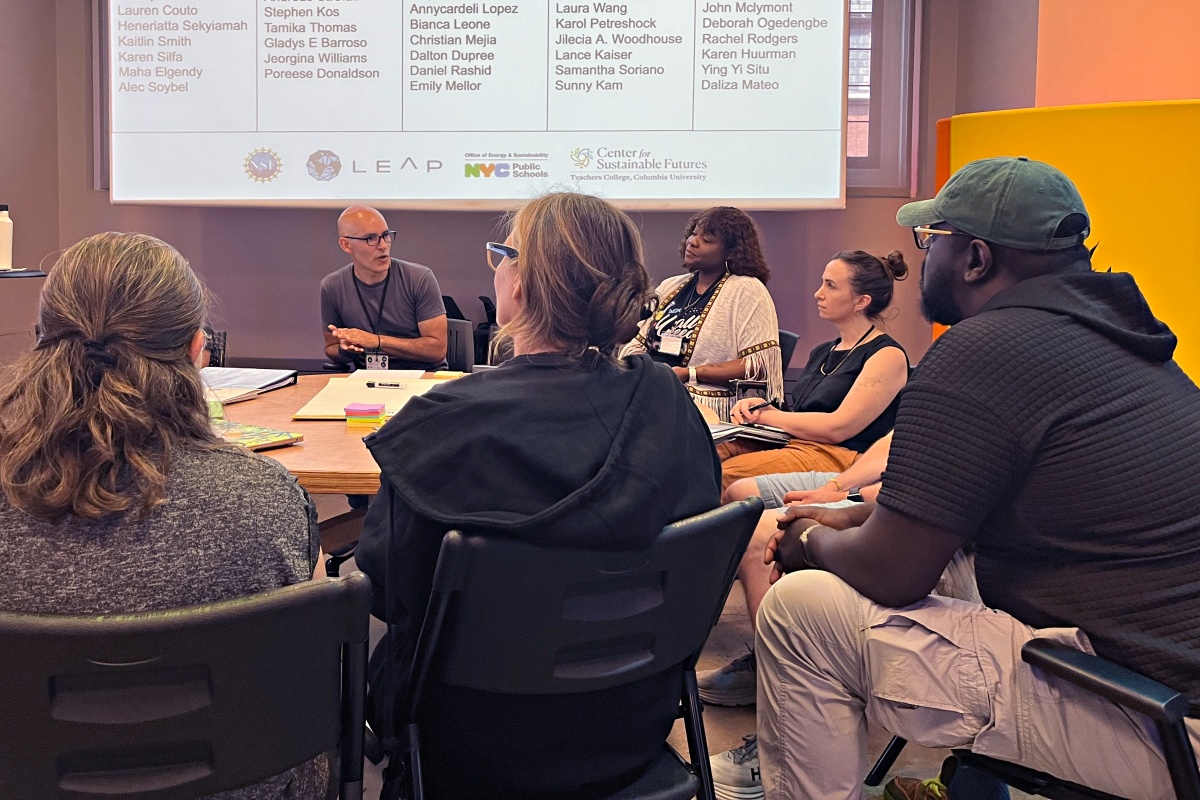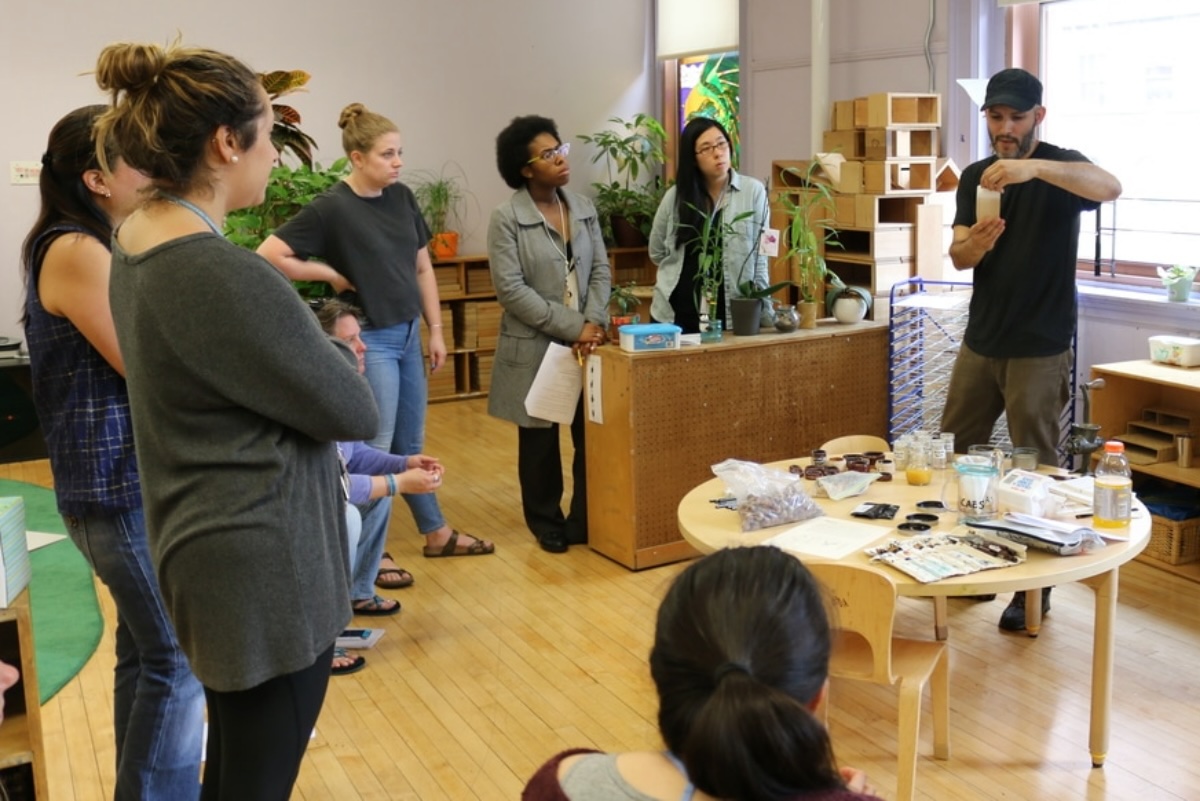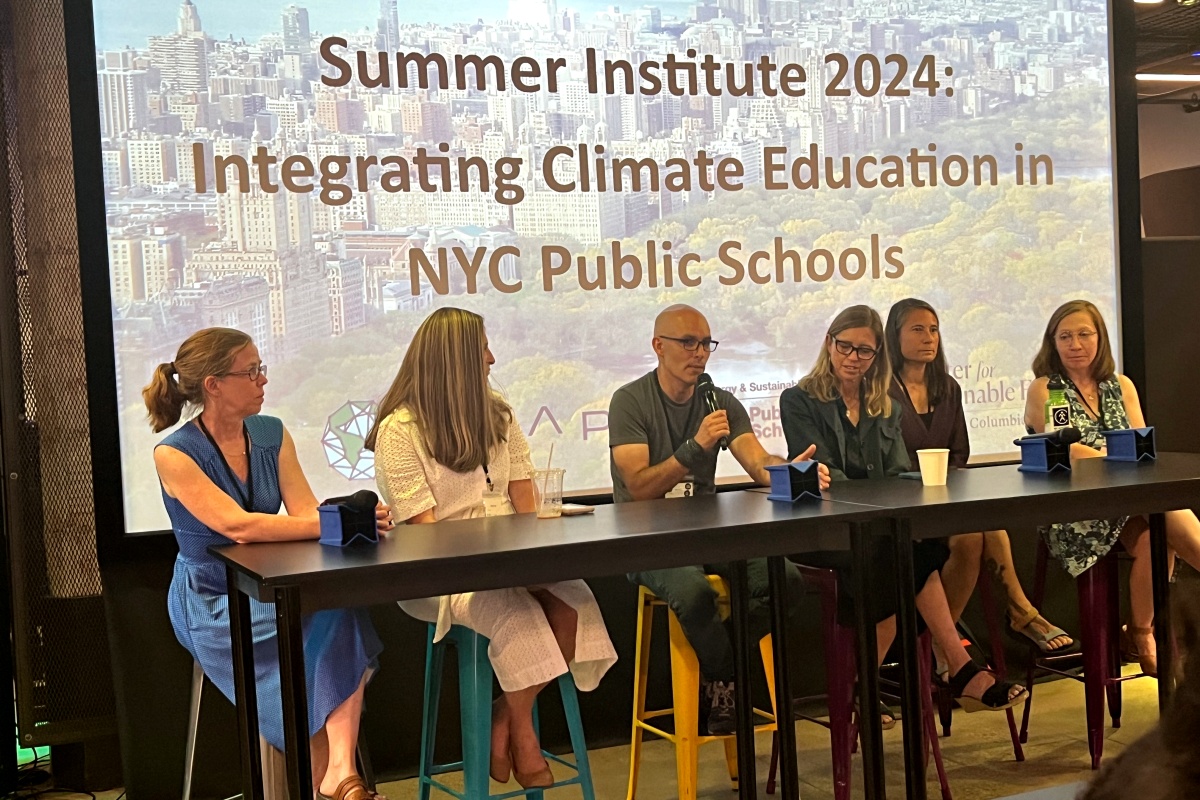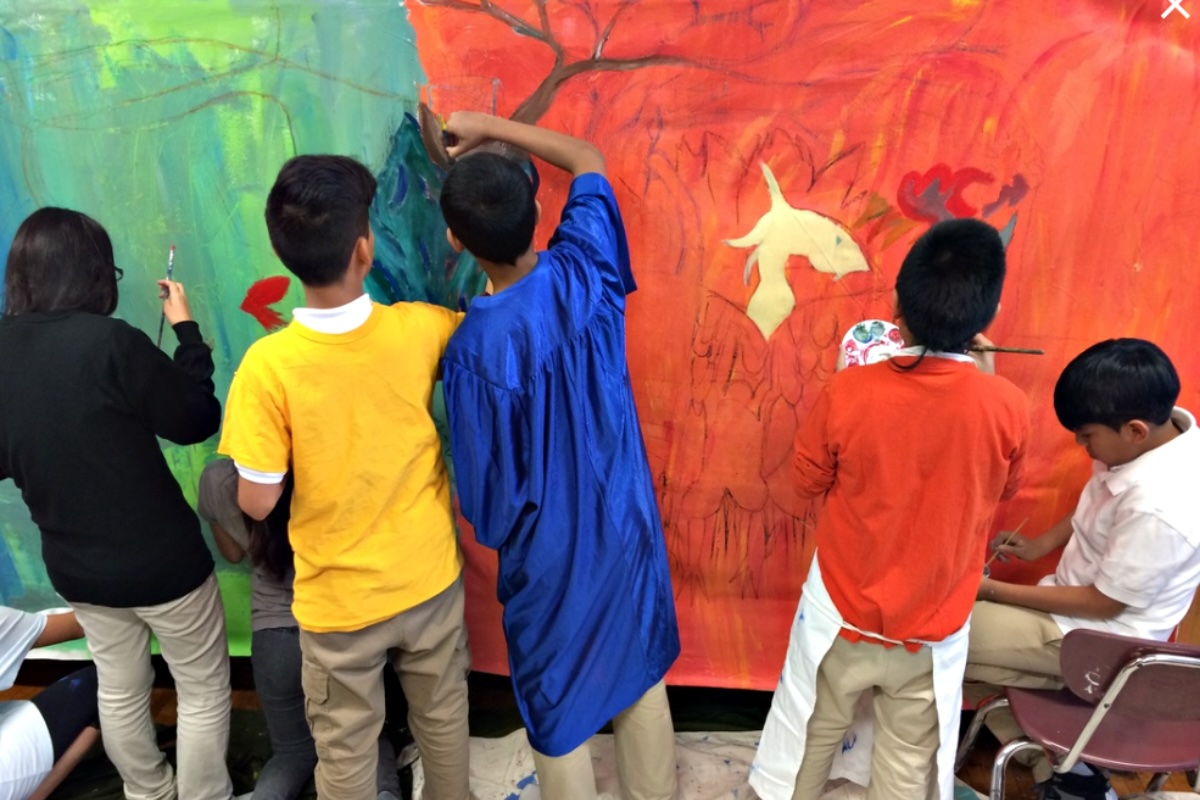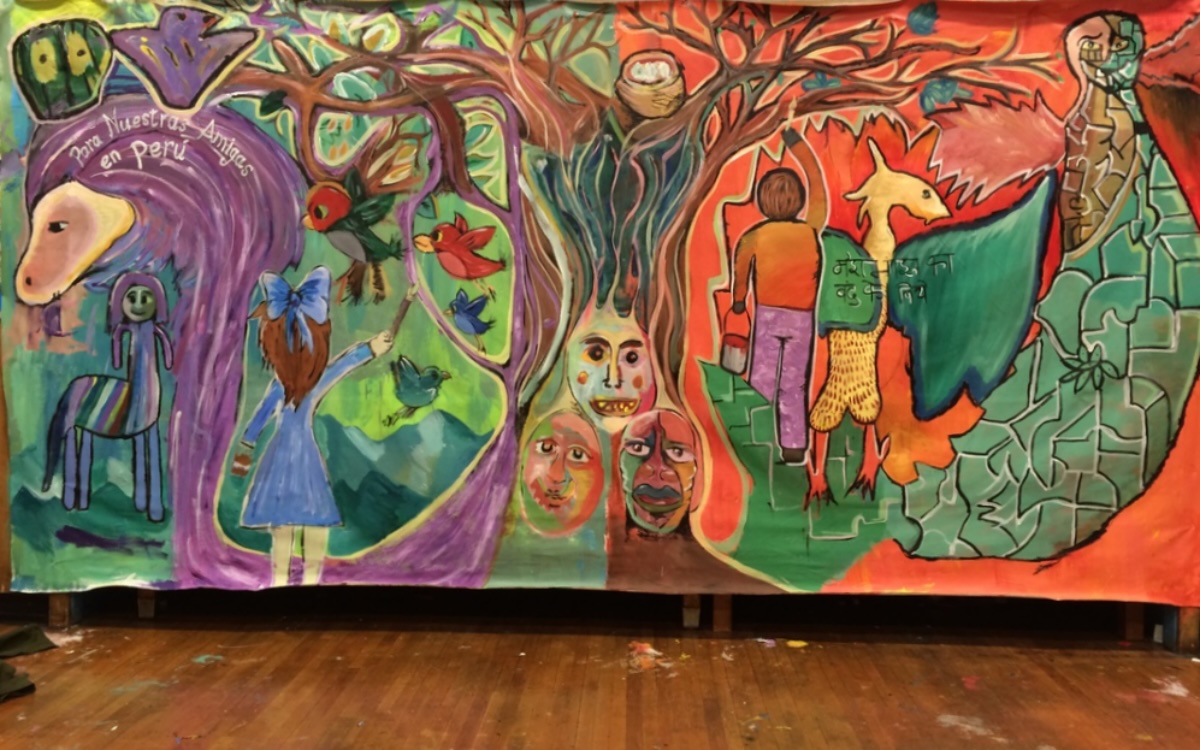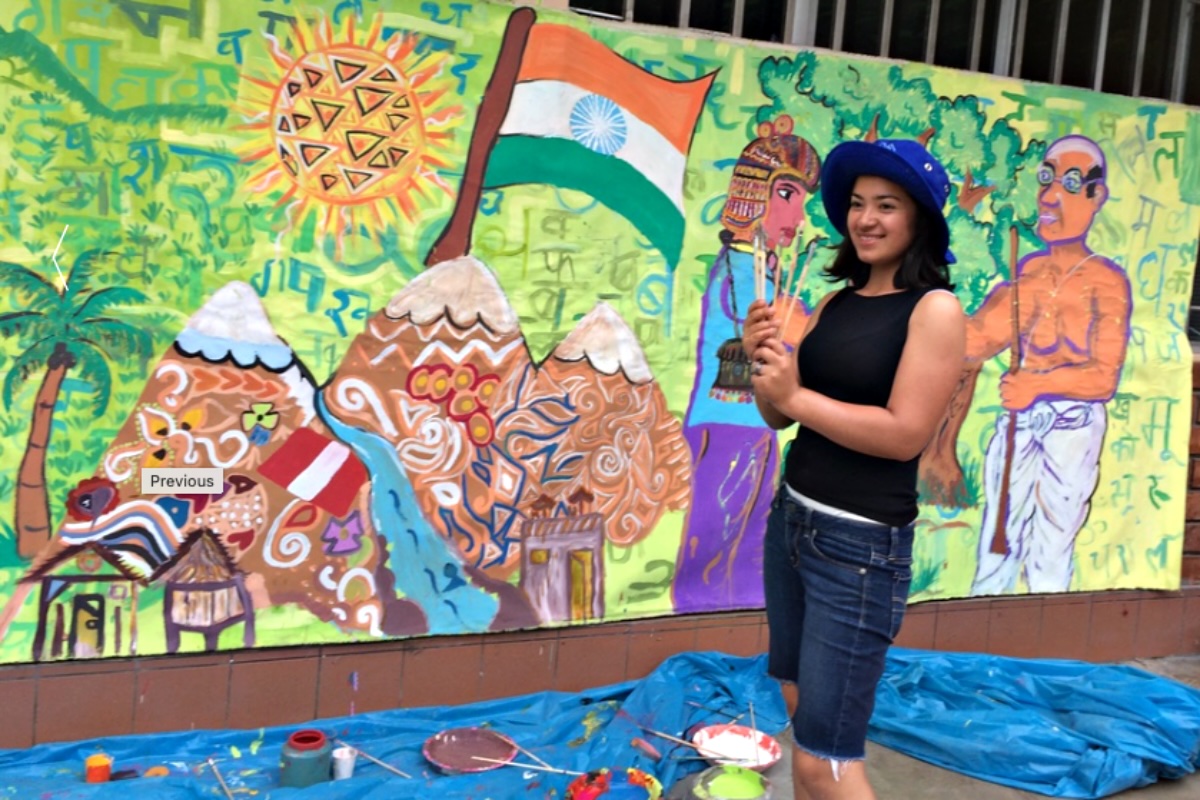As he approaches his 14th year teaching art in New York City, TC doctoral student Iván D. Asin recalls when he first strived for a more sustainable way of living. Art, Asin had realized, was not impervious to the pitfalls of overconsumption.
“Even if we had unlimited resources, that doesn’t mean we should abuse them or the world around us,” explains Asin, who moved to the U.S. from Chile, later began teaching, and then wanted to do more.
“When I came across the doctoral program in Art and Art Education at Teachers College, it just made sense,” says Asin, who leveraged insights from the program to establish the Center for Education and Sustainability (CAES), a nonprofit through which Asin helps art educators implement sustainable practices in their teaching. “Teachers College laid the framework for combining my passions for art education and sustainability to create something bigger.”
“Something bigger” was on full display recently at Teachers College, where Asin joined TC experts and others in helping 40 middle school educators incorporate sustainability and climate science into their teaching. In honor of the College’s recent Summer Climate Institute, Asin shares key insights from his art education and sustainability work.
Sustainability is a mindset.
For Asin, embracing a sustainable lifestyle is more comprehensive than a simple list of to-dos. It requires a reframing of the world around oneself — one that rejects shallow demonstrations of greenwashing.
“If you ask people why they recycle or why they do the things they do, the answer is not much further than ‘climate change’ or ‘global warming.’ But when we see it as a lifestyle change, we’re inclined to contribute to something much bigger,” says the art educator, who recommends partnering with community members to leverage local resources, particularly in metropolitan areas, which makes all the difference.
Asin’s track record includes employing this strategy in a variety of contexts, such as at an orphanage in Lima, Peru, where Asin helped students create pigments and dyes from the abundant Tara seeds surrounding them. “It is crucial that we provide our students — regardless of their age — with enough intellectual tools so they can continue exploring the possibilities for developing a sustainable art studio on their own.”
Strive for real, sustainable change with community partnerships.
It’s no secret that community building is key in widespread change. “The most important thing is to understand the local issues,” says Asin, reflecting on the Covid-19 pandemic as an example of the power of local thinking. “It’s much easier to get people to care when you’re talking about people they know – their neighbors, their kids, families— that has a much bigger impact. When it hits you closer to home, people want to get involved and take action. It’s the same concept for sustainability issues.”
The same sentiment applies to the classroom, too. “Often one of the greatest obstacles that schools face in successful, sustainable art education is connecting and having access to local community resources. It’s important that we create a genuine environmental consciousness so that our students feel compelled to act on what they have learned beyond the classroom walls,” Asin wrote in 2018.
“Focusing on being part of your smaller community is much more useful and empowering than looking too much at the global situation. At the core, what matters is your ability to talk about these issues.”
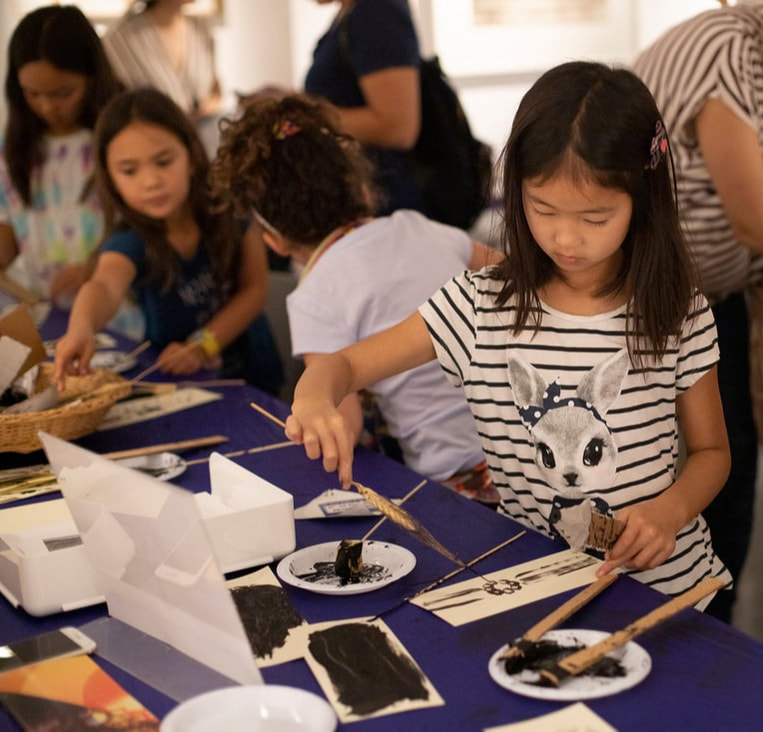
(Photo courtesy of Center for Education and Sustainability)
